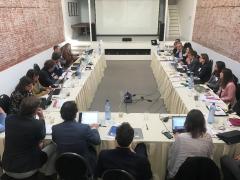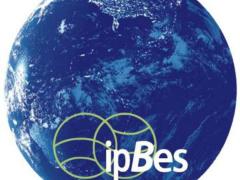Better grassland fertilisation can improve the world’s food supply
Global improvements in grassland management could see grasslands taking on a significantly more important role in food production. Better management would increase the production of meat and milk and prevent the need for additional feed for grazing livestock – feed in the form of grain crops that could otherwise be available for human consumption. Better management mainly involves proper fertilisation in order to retain sufficient amounts of, for instance, phosphorus in the soil. The phosphorus input will have to increase fourfold, if we are to meet production targets for the year 2050. These are the conclusions of scientists from Wageningen University, PBL Netherlands Environmental Assessment Agency, Utrecht University and the Food and Agriculture Organization of the United Nations (FAO), in a new article published in the scientific journal Nature Communications.
Grasslands make up two thirds of the global agricultural area. The over three billion hectares of grassland are hardly managed at all, with the exception of some north-western European countries including The Netherlands. The fact that grasslands are rarely if ever fertilised is an even greater problem, as this means they become more exhausted every year, among other things, due to a lack of phosphorus. In their Nature Communication article, the scientists describe the scale of the phosphorus exhaustion and what is needed to improve this situation.
In order to grow, grasses require nutrients, such as phosphorus from the soil. Grasslands are then grazed by livestock and the phosphorus ends up in the animals’ stomachs. Some of this phosphorus is needed in the production of milk and meat and eventually, thus, is removed from the grassland. Much of the phosphorus intake leaves the animals again in the manure. Only half remains on the pastures, as the manure is also used to fertilise arable land for growing food crops such as grains, fruits and vegetables, or for other purposes.
In their publication, the scientists show the extent to which grasslands have become exhausted, over recent decades. However, these grasslands should be making a larger contribution to the future food supply, providing feed for livestock, to limit the use of grain crops that could otherwise be used for baking bread.
The scientists, therefore, advocate paying more attention to grassland management, with a specific focus on better soil fertilisation using organic and mineral fertilisers. For the coming decades, they suggest the use of four times the amount of phosphorus in fertiliser than is currently the case. Only then will grass growth reach a level that would allow meat and milk production to increase, considerably, without too many additional grain crops having to be used as feed for livestock.
The situation in The Netherlands and some other European countries is different, since the phosphate content in grassland soils is high due to long-term surpluses. Here extra fertilizer inputs are not needed in the coming years.




